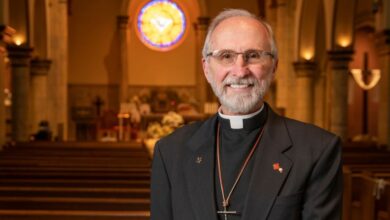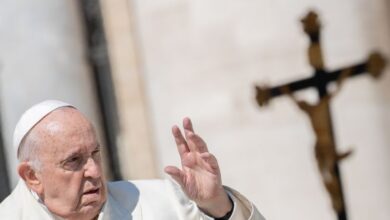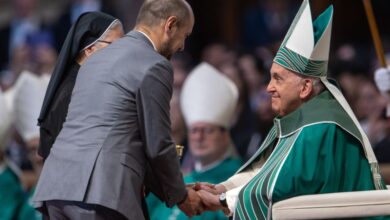Experts announce latest in restoration work on Jerusalem’s Church of the Holy Sepulcher
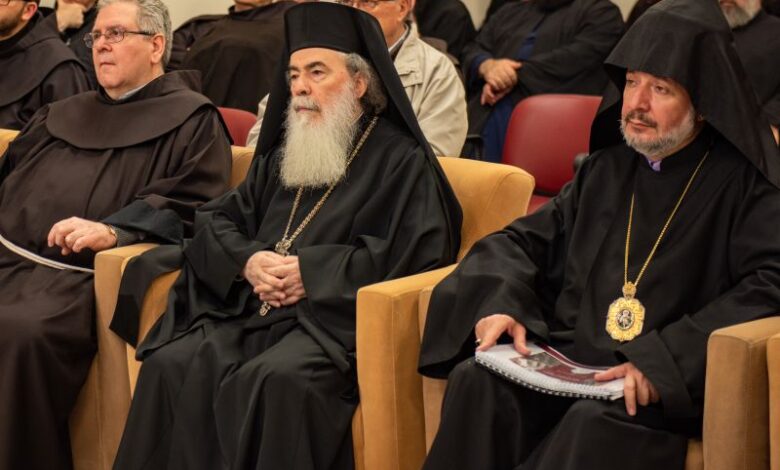
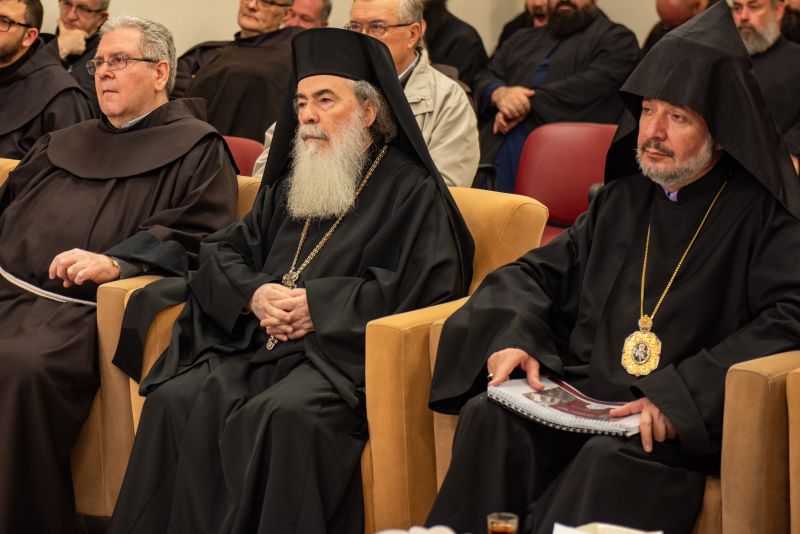 On Dec. 21, 2023, leaders of the three communities responsible for the Basilica of the Holy Sepulcher took part in a meeting for the presentation of the work in progress in the Holy Sepulcher in Jerusalem in 2023. From left to right: Father Francesco Patton, custos of the Holy Land; H. B. Theophilos III, Greek Orthodox patriarch of Jerusalem; and H. B. Nourhan Manougian, Armenian Patriarch of Jerusalem. / Credit: Marinella Bandini
On Dec. 21, 2023, leaders of the three communities responsible for the Basilica of the Holy Sepulcher took part in a meeting for the presentation of the work in progress in the Holy Sepulcher in Jerusalem in 2023. From left to right: Father Francesco Patton, custos of the Holy Land; H. B. Theophilos III, Greek Orthodox patriarch of Jerusalem; and H. B. Nourhan Manougian, Armenian Patriarch of Jerusalem. / Credit: Marinella Bandini Jerusalem, Dec 22, 2023 / 10:16 am (CNA).
On Dec. 21, new updates on the ongoing work at the Church of the Holy Sepulcher in Jerusalem were presented to leaders of the three communities responsible for the basilica: the Greek Orthodox, the Roman Catholic (Custody of the Holy Land), and the Armenian Apostolic churches.
The meeting took place at St. Saviour Monastery, the headquarters of the Custody of the Holy Land in Jerusalem.

Since March 2022, the basilica — one of the holiest sites in the world for Christians and an important pilgrimage site since the fourth century — has been undergoing restoration work on its flooring. In-depth archaeological investigations and infrastructure refurbishments are also being carried out.
Professor Francesca Romana Stasolla, leader of the team from the Department of Ancient Sciences at the University of Rome Sapienza responsible for the archaeological research, presented the main results achieved during the course of 2023 — some of which were already outlined in reports during June and July, as CNA reported.

On the same day as the presentation, a press release on the updates to the basilica was published by La Sapienza University of Rome, disseminated by the Custody of the Holy Land, the overseeing authority for the works at the Holy Sepulchre.
Since last summer, work on the basilica has continued, with a two-month interruption from Oct. 7 to Dec. 3 due to the ongoing war between Israel and Hamas, which temporarily hindered the archaeologists’ activities.
The elements relating to the early Christian period, mostly concentrated in the area of the rotunda, are of great significance, Stasolla explained to CNA.
“In a first phase, at the beginning of the fourth century, the monument built around the venerated tomb was open-air, with a colonnade around it. In the second phase, at the end of the fourth century, the rotunda proper was constructed,” Stasolla said. At that time, the area around the tomb took on an appearance very similar to what we see today.
Structures from the Roman period emerged in the area of the northeast deambulatory, where sections of a street were found under the walls of the church. “It is a public road,” Stasolla explained, which was destroyed for the construction of the Constantinian basilica.
“This is significant as it altered the topography of the city at a very early stage. Constructing a Christian church of this magnitude in a non-Christian city, in Jerusalem, at the beginning of the fourth century, is an extremely meaningful development,” she said. Other remains and elements “allow us to begin to delineate the first elements of a settlement framework of the Roman period.”

Together with the archaeological investigations, infrastructure refurbishments are also underway, especially those related to water and electricity running beneath the flooring. An update on the progress of these works was provided at the Dec. 21 meeting. There was also a presentation on the economic status of the project, which currently aligns with spending forecasts.
A special mention was given to the Franciscan Foundation for the Holy Land, a nonprofit organization based in Washington, D.C., through which the majority of the funds for the work have been raised. The foundation, operating under the auspices of the Franciscan Custody of the Holy Land, has been assisting the Christians of the Holy Land for 30 years.


